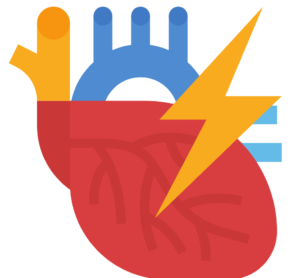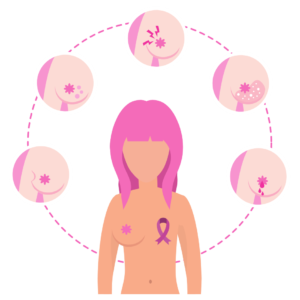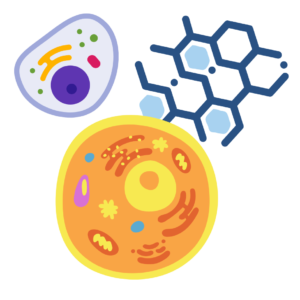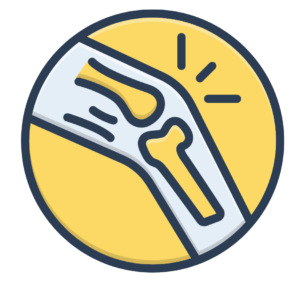Women go through more unexpected heart attack deaths in comparison to men. Depression and anxiety usually manifest among female patients. Urinary tract conditions exhibit more often in females, and sexually transmitted diseases can cause more harm to women. Among the conditions that prevail most frequently in women, the following five illnesses pose considerable health risks.
1. HEART DISEASE

Many women think breast cancer is the number one health risk they face, but surprisingly, it isn’t. Although many people believe heart disease a common illness among men, it actually affects males and females nearly equally. Surprised? I was. Heart disease accounts for around 27 percent of all female deaths and kills more women in our country than all cancer forms combined [1]. Read that again: Heart disease accounts for around 27 percent of all female deaths and kills more women in our country than all cancer forms combined. In the US alone, 49 percent of all consumers suffer from high blood pressure, high cholesterol, and are smokers – all factors that contribute to heart disease.
The American Heart Association lists risk factors for heart disease as:
- Increasing age
- Male sex (men typically develop heart disease at a younger age)
- Heredity (including race). People with a family history of the disease have a greater risk. So do African-Americans, Mexican-Americans, Native Americans, Native Hawaiians, and some Asian-Americans.
- Smoking
- High blood cholesterol
- High blood pressure
- Physical inactivity
- Obesity and overweight
- Diabetes
2. CANCER
Cancer is the second most deadly threat to a woman’s health. It is responsible for 22 percent of female deaths and kills almost 270,000 women in the United States each year.
However, breast cancer is not the most alarming threat. Lung cancer claims the most womens’ lives each year — approximately 70,000 annually — mostly due to smoking. Fortunately, lifestyle choices can help prevent at least one-third of all cancers, so you can cut your risk by adopting healthier habits. (More on this later)

Breast cancer is the second leading cause of cancer deaths, typically in the lining of our milk ducts. It can spread to other organs and is the most aggressive cancer affecting the global female population. Women who have breast cancer may develop breast lumps, but most breast lumps are nonthreatening. Still, women need to have each one carefully checked by a care provider. If you suspect anything, please see your physician immediately. As a breast cancer thriver myself, I can attest to the importance of being in tune with your body, being proactive and prioritizing healthy dietary and lifestyle choices.
The American Cancer Society lists the following as risk factors for breast cancer:
- Increasing age
- Genes. Nearly 5% to 10% of breast cancer is linked to mutations in specific genes (most commonly, the BRCA1 and BRCA2 genes).
- Family history of the disease
- Personal history of the disease
- Race. White women have a slightly greater risk of getting breast cancer compared with African-American women. Yet, African-Americans have a greater chance of dying from this disease.
- Earlier abnormal breast biopsy
- Earlier chest radiation
- Early-onset of menstruation (before age 12) or menopause after age 55
- Not having children
- Medication use, such as diethylstilbestrol (DES)
- Too much alcohol
- Obesity

Having specific genes DOES NOT necessarily mean you will develop genetic conditions. You are more prone to them, but lifestyle factors, trauma, and stress PLAY VERY LARGE ROLES in whether genes are expressed.
3. DEPRESSION & ANXIETY
Depression seems to affect more women than men. The National Institute of Mental Health reports that about 12 million women are affected by a depressive disorder each year compared to about 6 million men. That’s a big difference!
Natural hormonal fluctuations can lead to depression or anxiety. Premenstrual syndrome (PMS) occurs commonly among women, while premenstrual dysmorphic disorder (PMDD) presents similarly, with greatly intensified symptoms. Shortly after birth, many mothers acquire a form of depression called the “baby blues” or postpartum. Still, perinatal depression causes identical – but much more potent – concerns, emotional shifts, sadness, and tiredness. Perimenopause (the transition into menopause) and menopause, can also be linked to depression.
Other risk factors for depression include:
- A previous depressive episode
- Family history of depression
- History of heart problems
- Serious chronic illness
- Marital problems
- Substance abuse
- Use of drugs that could trigger depression, such as medicines for high blood pressure or seizures
- A stressful life event, such as job loss or death
- Diseases that could trigger depression, such as vitamin deficiency and thyroid disease
- Recent severe illness or surgery
- Childhood history of physical or sexual abuse
- Being a worrier or being overly anxious
- Having an eating disorder or an anxiety disorder

4. AUTOIMMUNE DISEASE

Autoimmune disease occurs when our cells that eliminate threats, such as viruses, attack healthy cells. As this condition continues to escalate among the population, researchers remain baffled as to why the condition affects mostly women.
According to the American Autoimmune Related Diseases Association (AARDA), about 75% of autoimmune diseases occur in women. That’s an incredibly high number. The most popular being diabetes, thyroid disease, and lupus. Autoimmune disorders make up the fourth-largest cause of disability among American women.
While many distinct autoimmune diseases exist, most share symptoms such as:
- Exhaustion
- Mild fever
- Pain
- Skin irritation
- Vertigo
Interestingly, most of the autoimmune system rests in the stomach. As such, autoimmunity is directly related to a condition known as leaky gut. This occurs when we eat food our body can’t digest properly. This causes abrasions in the gut lining – allowing particles that shouldn’t be in our intestine to pass into it, and allowing particles that shouldn’t be in our blood stream to enter our blood stream. This causes a catastrophe our body must respond to, and commonly results in the development of autoimmune disease.
Fortunately, many who suffer from autoimmune conditions have resorted to natural healing practices to heal their gut, such as:
- Avoiding problematic foods
- Consuming healing foods
- Lowering/managing stress
- Reducing toxin exposure
- Becoming/increasing movement
- Losing fat
However, the best defense against autoimmune disease is early detection. Here are some symptoms of gut inflammation/leaky gut:
- Chronic diarrhea, constipation, or bloating
- Nutritional deficiencies
- Fatigue
- Headaches
- Confusion
- Difficulty concentrating
- Skin problems, such as acne, rashes, or eczema
- Joint pain
- Widespread inflammation
5. OSTEOPOROSIS
Hunched backs, back pain, bone fractures and frailty used to be things older women had to accept before doctors knew anything more about osteoporosis. Currently, there are steps women can take to prevent or avoid such problems. Osteoporosis threatens 44 million Americans, 68% of which are women, reports the National Osteoporosis Foundation.
Risk factors for osteoporosis include:

- Female sex
- Increasing age
- Small, thin-boned frame
- Ethnicity. White and Asian women have the most significant risk.
- Family history
- Sex hormones. Infrequent menstrual cycles and estrogen loss due to menopause is a factor.
- Anorexia
- Diet low in calcium and vitamin D
- Medication use, particularly glucocorticoids or some anticonvulsants
- Sedentary lifestyle
- Smoking
- Excessive alcohol
There are many steps you can take right now in order to increase bone health. Weight bearing exercise, eating a nutrient dense diet (including plenty of protein), maintaining a healthy weight and having enough estrogen to contribute to your bone health are big ones. You may want to talk to your doctor about your possible risk of osteoporosis and what you can do to prevent problems.
HEAR IT FROM ME
I learned I had breast cancer at the ripe old age of 39. To say I was shocked is an understatement. Thankfully, we caught it early, and I’ve been cancer free for 13 years. Apparently, I just told you all how old I am lol. A few years later I developed Hashimoto’s – an autoimmune disease that affects my thyroid. I suspect I am dealing with additional autoimmunities, which is pretty common. If you have one, you’re more susceptible to developing others. I can look back and attribute these to the fact that I was leading a very unhealthy lifestyle – I was overweight, inactive and overly stressed. But I didn’t realize at the time that these were contributing factors.
For the last 12 years, I’ve completely changed my lifestyle. I’ve cleaned up my diet, gotten active, learned to recognize and manage my stress, and I work with some pretty great practitioners who share my healthy perspectives.
Another important factor for me recently, as a menopausal woman, is the importance of developing sufficient hormones and maintaining good hormone balance to support my health. Interestingly, lack of estrogen can greatly contribute to heart disease, depression and anxiety, osteoporosis and even brain disease! Some (many, actually) say estrogen depletion contributes to the development of cancer, and I’ll bet some would even say it contributes to autoimmune disease. (There will be more on Bioidentical Hormone Replacement Therapy (BHRT) in a future post.)
If I encourage you in any way, I hope it is that I’ve encourage you to be informed. There are many conventional doctors who would rather put you on a prescription for depression than tell you about other healing methods (i.e., BHRT). Or prescribe a statin when optimal hormone ranges can balance your cholesterol more naturally. If you want to live optimally and full of health, make sure you’re working with the right team of health professionals. Remember, they are working for YOU.




